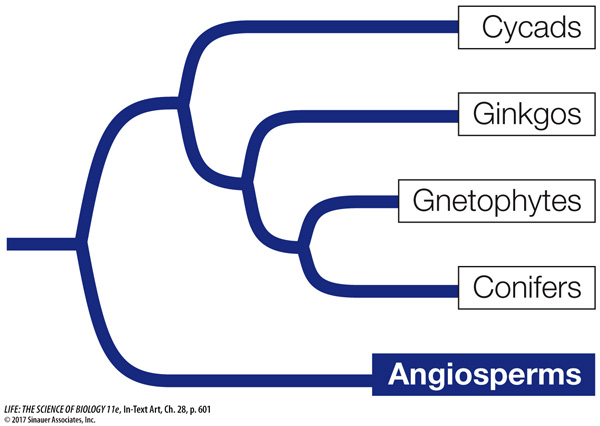key concept
28.3
Flowers and Fruits Led to Increased Diversification of Angiosperms
key concept
28.3
Flowers and Fruits Led to Increased Diversification of Angiosperms

The most obvious feature defining the angiosperms is the flower, which is their sexual structure. Production of fruits is also a synapomorphy (shared derived trait) of angiosperms. After fertilization, the ovary of a flower (together with the seeds it contains) develops into a fruit that protects the seeds and can promote seed dispersal. As you will see, both flowers and fruits gave angiosperms major reproductive advantages that led to their dominance of the terrestrial environment in the Cenozoic era (see Figure 28.1).
focus your learning
In nearly all angiosperms, two male gametes, contained in a single microgametophyte, participate in fertilization.
Fruits are often specialized to encourage dispersal by animals, wind, or water.
All parts of a flower are modified leaves.
Angiosperms and their animal pollinators have been coevolving for more than 150 million years.